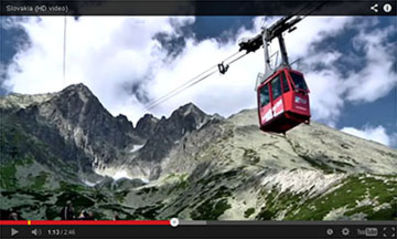Welcome to Nitra, a small big city where everything is close!
A picturesque city with a panorama from all directions – lying under the Zobor hill, which is the first mountain range from the southern side of Slovakia, just a few dozen kilometers from Vienna (170 km) and Budapest (160 km). Nitra spreads across seven green hills and blends ancient history with nature. The river Nitra flows through the heart of the city. Nitra is the cradle of history – the seat of a bishop for more than 1,000 years, a paradise for archaeologists, the mother of Slovak towns. Nitra is one of the oldest towns in Slovakia and lies on seven green hills. The first written mention of Nitra dates back to 871–873 in the chronicle of the conversion of the Bavarians and Carinthians. The history of Nitra goes back to circa 30,000 BCE, with inhabitants already present in prehistoric times. On this site, the first Christian church in Slovakia was built. During the Great Moravian period, Nitra was one of the largest settlement agglomerations in Central Europe.
The city’s landmark – Nitra Castle attracts numerous visitors each year, the Nitra Calvary is both a pilgrimage site and a place for active relaxation, and unique is the genius loci of the oldest monastery in Slovakia – the Zobor Monastery nestled in the heart of nature.
The Slovak Agricultural Museum is the only one of its kind in Slovakia, with numerous exhibits of traditional agricultural production, a steam railway, and demonstrations of traditional work and crafts. The museum is part of Slovakia’s largest exhibition site – Agrokomplex. Nitra also includes a small airport where international gliding competitions are held annually.
Nitra lies on two important European cultural routes: the St. James Way and the Cyril and Methodius Route. The tradition of St. Cyril and Methodius runs through the city’s history to the present day.
The city is gradually implementing sustainability in transport, and ecology is integrated into every aspect of city life.
Nitra is the gateway to a region rich in natural potential and cultural heritage, offering diverse and environmentally mindful experiences (for example visits to local wineries, via ferrata climbing, an experiential city honey-bakery). By involving local guides, regional producers, the local gastronomy, grape processing and wine production, honey and honey-product production are showcased. Sustainable forms of experience and quality improvement feed into tourism development, enriched with virtual tours and educational games. Nitra is also a city of youth (2 universities), a space for intercultural and intergenerational dialogue and inclusion of all communities.
Nitra is simply a city worth discovering, knowing, and experiencing!















